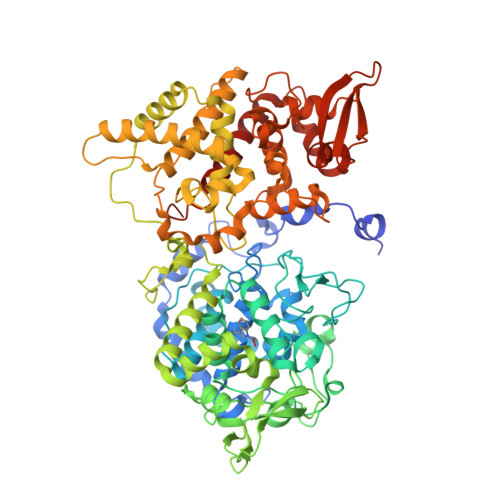A molecular switch and electronic circuit modulate catalase activity in catalase-peroxidases.
Carpena, X., Wiseman, B., Deemagarn, T., Singh, R., Switala, J., Ivancich, A., Fita, I., Loewen, P.C.(2005) EMBO Rep 6: 1156-1162
- PubMed: 16211084
- DOI: https://doi.org/10.1038/sj.embor.7400550
- Primary Citation of Related Structures:
5SW4, 5SW5, 5SW6, 5SX0 - PubMed Abstract:
The catalase reaction of catalase-peroxidases involves catalase-specific features built into a peroxidase core. An arginine, 20 A from the active-site heme, acts as a molecular switch moving between two conformations, one that activates heme oxidation and one that activates oxoferryl heme reduction by H(2)O(2), facilitating the catalatic pathway in a peroxidase. The influence of the arginine is imparted to the heme through its association with or dissociation from a tyrosinate that modulates reactivity through a Met-Tyr-Trp crosslinked adduct and a pi electron interaction of the heme with the adduct Trp.
Organizational Affiliation:
Department of Microbiology, University of Manitoba, Winnipeg MB R3T 2N2, Canada.





















